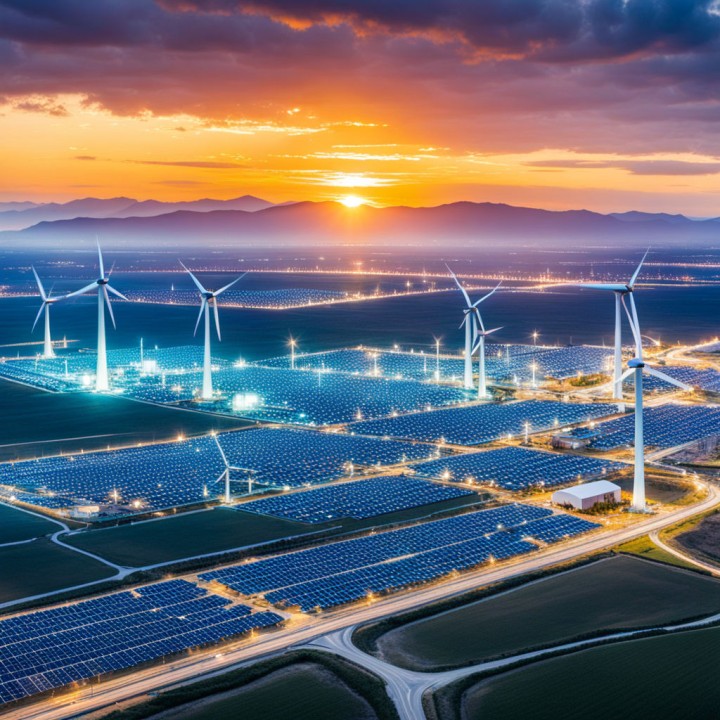AI Revolutionizes Energy Saving in Factories
Hey everyone, welcome back to the blog! Today, we’re diving into an exciting topic: how Artificial Intelligence (AI) is revolutionizing energy efficiency in manufacturing. If you’re interested in tech trends and sustainable practices, you’re in the right place. Don’t forget to visit our page frequently for more insights into AI and innovation. Let’s jump in!
The AI-Driven Transformation in Manufacturing
Manufacturing is entering a transformative era, thanks to AI. Factories worldwide are grappling with excessive energy consumption, which not only leads to higher operational costs but also increases their carbon footprint. By leveraging AI’s ability to analyze patterns and predict outcomes, manufacturers can identify inefficiencies and optimize energy use in real time. This leads to significant energy savings, reduces environmental impact, and helps businesses embrace more sustainable manufacturing practices.
Beyond just energy savings, AI is reshaping the entire manufacturing landscape by enabling process optimization, improving product quality, and streamlining operations—all while minimizing energy waste.
Key AI Applications in Energy Efficiency
Let’s explore some of the key ways AI is helping factories save energy:
1. Energy Monitoring and Management
AI systems continuously monitor a factory’s energy consumption in real-time, identifying patterns and anomalies in energy usage. By pinpointing areas of inefficiency, AI enables better optimization of energy consumption, reducing waste and improving overall efficiency.
2. Smart Grids and Energy Storage
AI is instrumental in managing smart grids and energy storage systems. It predicts energy demand and determines when to store or release energy, ensuring optimal usage. Smart grids, driven by AI, dynamically balance energy supply
and demand, contributing to more sustainable energy practices.
3. Process Optimization
AI algorithms optimize manufacturing processes by adjusting parameters in real-time. This ensures that machines operate at their most energy-efficient levels, reducing both energy waste and unnecessary consumption. As a result, factories can cut down on costs while also boosting productivity.
4. Supply Chain Optimization
AI’s role in supply chain optimization is crucial for energy savings. By predicting demand and adjusting production schedules accordingly, businesses can prevent overproduction—one of the main sources of energy waste in manufacturing.
5, Energy-Efficient Equipment and Systems
AI helps identify and select the most energy-efficient equipment and system configurations. By recommending solutions that reduce energy consumption, AI contributes significantly to cost savings and environmental sustainability.
6. Occupancy and Environmental Controls
AI-powered systems monitor occupancy levels and environmental conditions within the factory, adjusting heating, ventilation, and lighting based on real-time data. This ensures energy savings in unoccupied areas and specific environmental conditions, further optimizing energy use.
7. Continuous Improvement
AI thrives on continuous improvement. Machine learning models analyze historical data to identify opportunities for enhancement. By learning from past performance, AI systems recommend changes that reduce energy consumption over time, creating a long-term impact.
8. Energy Consumption Forecasting
Using historical data and external factors like weather patterns, AI can accurately forecast future energy consumption. This allows factories to plan for peak usage periods

and optimize energy distribution accordingly, preventing unnecessary energy spikes.
9. Employee Engagement
AI can also help engage employees in energy-saving practices by providing real-time feedback and incentives for adopting energy-efficient behaviors. When everyone is on board, the sustainability efforts are amplified, making a big difference in overall energy savings.
How AI is Enhancing Energy Efficiency in Factories
AI is much more than just a buzzword in manufacturing—it’s a transformative force. By analyzing data from IoT devices and Manufacturing Execution Systems (MES), AI can identify critical energy consumption patterns and help factories make real-time adjustments to optimize energy usage. This prevents waste during low-demand periods and ensures peak efficiency during high-demand times.
AI also functions like a virtual assistant, identifying inefficiencies, recommending maintenance, or suggesting equipment replacements when energy-intensive machines are no longer performing at optimal levels. Beyond immediate improvements, AI helps factories plan for a sustainable future by analyzing their environmental impact and offering actionable insights to reduce carbon footprints.
By integrating AI technologies into factory operations, businesses can achieve substantial reductions in energy consumption, lower operational costs, and contribute to a more sustainable and environmentally friendly manufacturing process.
If you found this article informative, let us know in the comments what AI applications you’re most excited about. Don’t forget to share this post with your tech-savvy friends. Until next time, stay curious and embrace the future!
For further assistance, visit our channel and refer the video .

Share This :

